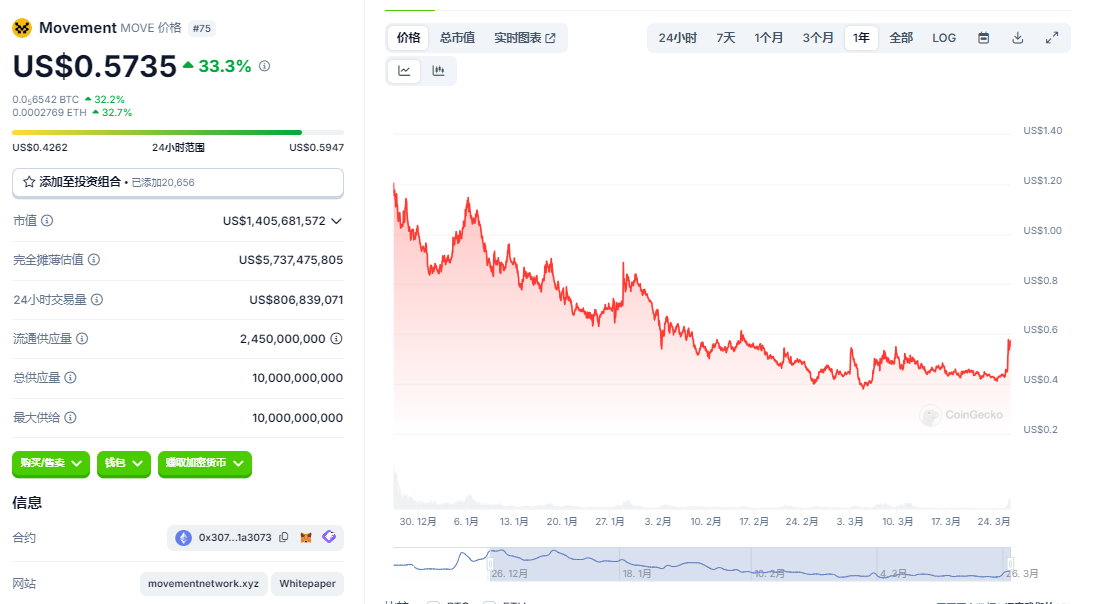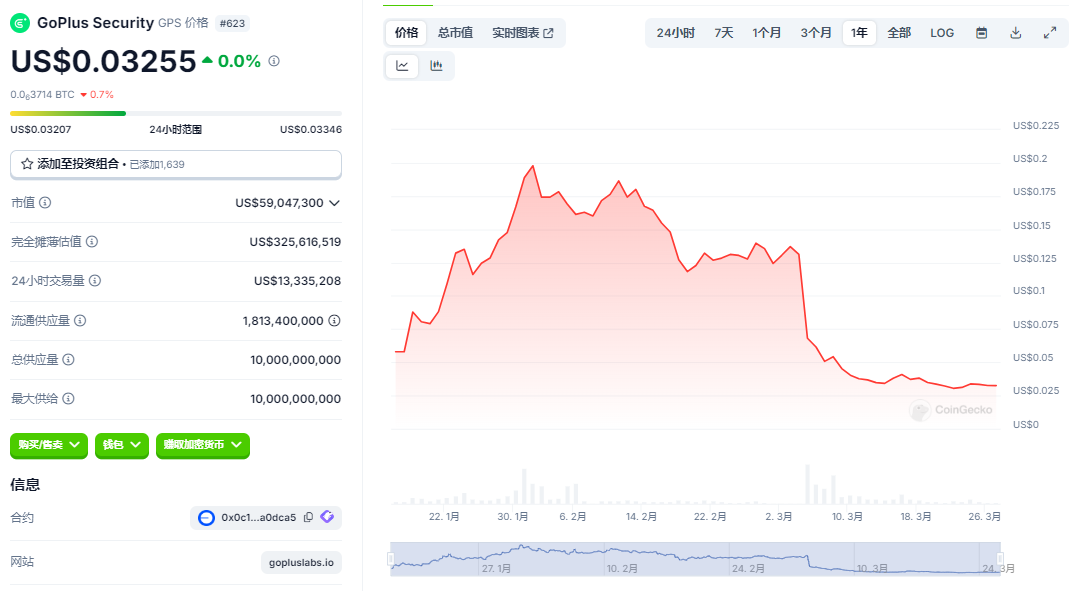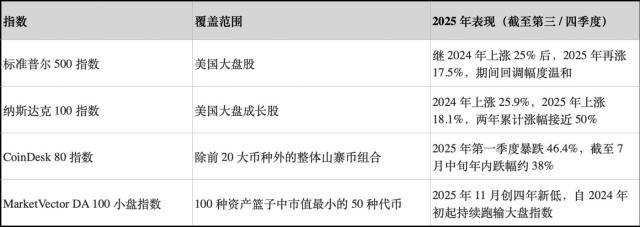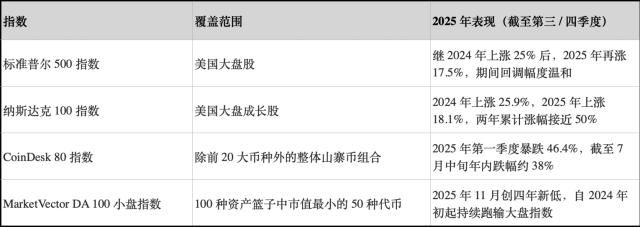On March 25, 2025, Binance's announcement once again put the "black box of market makers" in the crypto market at the forefront. The market maker of the Movement (MOVE) project was exposed to have made a profit of $38 million by maliciously selling 66 million tokens. This is the third time that Binance has publicly disclosed illegal operations by market makers this year, following the plunge of GPS and Shell tokens. Behind this series of thunder, not only the tip of the iceberg of the industry's accumulated malpractices was exposed, but also the secret game between exchanges, project parties and capital was revealed.
1. Event review: From MOVE to GPS, Web3port’s “textbook-level harvest”
1. MOVE Collapse: A Precision Liquidity Sniper War

On December 10, 2024, the second day after the MOVE token was listed on Binance, market maker Web3port sold 66 million tokens (3.11% of the circulating supply) with almost no buy orders, causing a price crash. Three months later, the market maker had accumulated a profit of $38 million, and was eventually frozen by Binance and delisted.
On-chain data shows that Web3port’s operations follow the standard path of “taking chips – creating a liquidity vacuum – panic selling”:
- Chips acquisition: The project team initially allocated 70 million MOVE tokens to Web3port as consideration for liquidity support;
- Selling time: Choose the window period after the token is launched when the market sentiment is high but the depth is insufficient;
- Harvesting method: Create a stampede effect by creating a "sell order wall" with a volume of orders far exceeding the market's ability to bear, and repurchase at a low price to form secondary arbitrage.
2. Prequel: GPS and Shell’s “same script”

This is not the first time Web3port has appeared. In March 2025, GoPlus (GPS) plummeted 80% in three days after it was launched on Binance, and market makers sold 70 million tokens to cash out $40 million; Shell cut its price in half in the same way, making a profit of $20 million. All three project parties claimed that they were "unaware of the market maker's behavior", but the flow of funds on the chain showed that Web3port had a token distribution agreement with the project party, and some addresses were suspected to be related to Asian capital.
2. Unsolved mystery: Who is manipulating this “compliance game”?
1. Binance’s “selective disclosure”: regulatory pressure or proactive purification?
Over the past year, more than 80% of the tokens listed on Binance experienced a "surge in prices upon listing", but it was not until March 2025 that the three market makers were collectively disclosed for violating regulations. This timing is intriguing:
- External pressure: The old case in which the SEC sued Binance for condoning market manipulation in 2024 is still fermenting, and the proactive disclosure may be in exchange for easing of supervision;
- Internal rectification: After Binance’s new compliance officer David Newns took office, he promoted the upgrade of the exchange’s risk control system, and the AI monitoring model captured abnormal transaction chains;
- Community pressure: Multiple KOLs publicly questioned the exchange through on-chain data, forcing the exchange to respond.
2. Market makers take the blame? Project owners and investors suspected of collusion
Although the Movement Foundation claimed that it “learned about the violation from Binance on March 11,” on-chain evidence shows:
- Token distribution loophole: The project only released 0.6% of the tokens in the airdrop, and 17 associated addresses transferred more than 100 million MOVE to market makers in advance;
- Binding of interests: Web3port was revealed to be a "strategic partner" of Movement, and its parent company Spark Digital Capital participated in the early financing of the project;
- Silent capital: The market makers’ profit funds eventually flowed to offshore accounts in Singapore and Hong Kong, and there is suspected profit-sharing agreement with the Asian VC system.
What’s even more ironic is that when the community asked the project to sue the market maker, Movement only promised to “use frozen funds to buy back tokens” - essentially using the money lost by retail investors to “save themselves” rather than hold them accountable.
3. Unwritten rules of the industry: Why do market makers become “white gloves harvesters”?
In traditional financial markets, market makers are required to be licensed and strictly regulated, but in the crypto space, this role has become an arbitrage tool in the gray area:
- Coin listing threshold: The exchange requires the project party to provide market maker endorsement, and the latter uses this to claim token discounts or free quotas;
- Benefit transfer: Market makers exchange project tokens for "liquidity maintenance" and then cash out by selling them, forming a closed loop with VC exit;
- Regulatory vacuum: Most jurisdictions do not regulate crypto market makers, and the cost of non-compliance is extremely low.
3. Exchange dilemma: the “Blockchain Trilemma” of efficiency and security
1. Binance’s Dilemma
As an industry leader, Binance needs to maintain trading depth (relying on market makers) and protect user interests (fighting manipulation), but the two often conflict:
- Technical limitations: Despite the introduction of AI monitoring, market makers conceal the flow of funds through cross-chain bridges and coin mixers, making it difficult for exchanges to track in real time;
- Binding of interests: Top market makers control the resources for listing coins, and a complete ban on exchanges may lead to a depletion of liquidity;
- Responsibility shifting: The public opinion was calmed by "delisting market makers + project party buyback", but core issues such as the token distribution mechanism were not touched upon.
2. Other exchanges’ “silent collusion”
Compared with Binance’s high-profile handling, platforms such as OKX and Bybit have remained silent on similar incidents for a long time. Industry analysts pointed out:
- Competitive pressure: Small and medium-sized exchanges rely on market makers to increase volume and maintain their rankings, condoning their manipulation;
- Compliance costs: Establishing an on-chain monitoring system and reporting mechanism requires huge investment, which non-head platforms cannot afford;
- Industry black box: Market makers often operate on different platforms under multiple aliases, making it difficult for a single exchange to monitor the overall situation.
4. Industry reflection: How can the crypto market get out of “systemic corruption”?
1. Technological breakthrough: Can on-chain transparency cure chronic diseases?
- Market maker address disclosure: mandatory disclosure of wallet addresses, and real-time monitoring of token flows through tools such as Dune;
- Smart contract constraints: Linking market maker compensation to the long-term performance of tokens rather than a one-time token distribution;
- DAO governance intervention: The community votes to determine the qualifications of market makers, breaking the one-way agreement between the project party and the market maker.
2. Institutional reconstruction: from "wild growth" to "licensed operation"
- License threshold: Refer to MiCA regulations, requiring market makers to disclose financial strength, trading strategies and related parties;
- Legal cooperation: Establish a "market maker blacklist" between exchanges and jointly freeze illegal funds;
- Investor relief: Establish an industry protection fund to make advance payments for losses caused by manipulation.
3. Investor self-help: How to identify the “market maker trap”?
- On-chain reconnaissance: Track the flow of large amounts of tokens through Etherscan/BNB Chain browsers, and be alert to abnormal recharges before going online;
- Project due diligence: Priority will be given to projects that have their own market-making teams or cooperate with compliance institutions such as Wintermute;
- Regulatory trends: Pay attention to enforcement cases against market maker manipulation by the SEC and other agencies, and avoid high-risk platforms.
5. The ultimate question: What is left in the crypto market after the collapse of trust?
The Movement incident is by no means an isolated case, but a microcosm of systemic corruption in the industry. When exchanges, project owners, and market makers form an alliance of interests, retail investors become the only losers in this game. Although Binance's "self-destructive" treatment this time shows its determination to reform, if it fails to start from the root causes such as the token distribution mechanism and market maker admission standards, similar harvesting scripts will still be repeated.
The future of the crypto market requires not only more transparent on-chain data, but also a thorough revolution in the distribution of benefits. When 90% of the projects in the industry rely on market makers to "inflate the volume of tokens", perhaps only by overthrowing this set of distorted rules can it truly mature.







